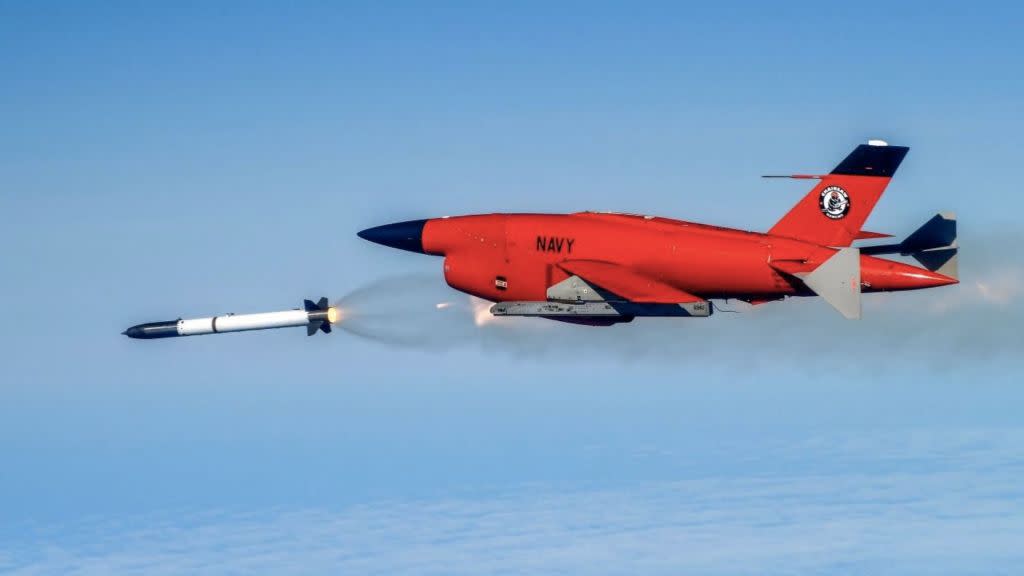The U.S. Navy successfully air-launched a Solid Fuel Integral Rocket Ramjet (SFIRR) from an unmanned vehicle for the first time, one step toward modernizing missile technology.
The effort by Naval Air Warfare Center Weapons Division (NAWCWD) appears to revive a decades-old concept to miniaturize missiles by combining an air-breathing ramjet with a solid fuel rocket.
The test also integrated the use of a fire control system on a BQM-34 unmanned target vehicle for live firing, demonstrating advancements in high-speed, long-range weapon capabilities. Launching the missile from an unmanned vehicle can allow warfighters to safely engage targets from greater distances, according to NAWCWD.
Warfighting advantage
In the past 12 months, advanced propulsion, avionics and fire control technologies were combined into the technology demonstrator. NAWCWD highlights that rapidly transitioning technologies from research to operational use is critical for maintaining a warfighting advantage.
Abbey Horning, product director of NAWCWD’s Advanced Concepts, Prototyping and Experimentation office, stated that the new successful integration validates key aspects of their design and moves them closer to delivering an advanced propulsion system that will provide warfighters with greater range and speed.
“We’re not just revisiting an old idea; we’re refining and modernizing it to fit today’s mission,” Horning said.
Solid Fuel Ramjet technology isn’t new
The Solid Fuel Ramjet technology is not new. However, it’s still related to modern battlefield.
The latest test advanced a missile design aimed at improving range and targeting for future Navy missions.
SFIRR simplifies missile propulsion by eliminating the complexity found in liquid fuel ramjet propulsion. This significantly reduces weight, allowing missiles to carry more payload and travel greater distances with increased maneuverability, according to a press release.
“SFIRR offers a balance of affordability, reliabilit,y and performance tailored to the Navy’s operational needs,” said Horning.
“We’ve been driving cars since the early 1900s, but that doesn’t mean we stopped improving them,” Ephraim Washburn, deputy director for energetics at NAWCWD.
“Solid fuel ramjet technology had significant investment in the 1970s and 1980s, but we’re making it a modern propulsion solution for the fleet today.”
Combat-credible technology
Washburn highlights that this is a combat-credible technology. “We are working to refine its range, endurance, and targeting capabilities.”
Washburn also stressed that technology evolution occurs across many industries. He compared SFIRR advancements to automotive improvements, where early designs laid a foundation, and ongoing developments continue to enhance performance.
Ramjet uses external air for combustion, it is a more efficient propulsion system for flight within the atmosphere than a rocket, which must carry all of its oxygen. Ideally suited for very high-speed flight within the atmosphere, ramjet systems can increase missile range.
Some reports highlighted that ramjets produce thrust only when the vehicle is already moving; ramjets cannot produce thrust when the engine is stationary or static.
Since a ramjet cannot produce static thrust, some other propulsion system must be used to accelerate the vehicle to a speed where the ramjet begins to produce thrust. The higher the speed of the vehicle, the better a ramjet works until aerodynamic losses become a dominant factor, according to some previous experiments.
Yahoo News – Latest News & Headlines
Read the full article .


